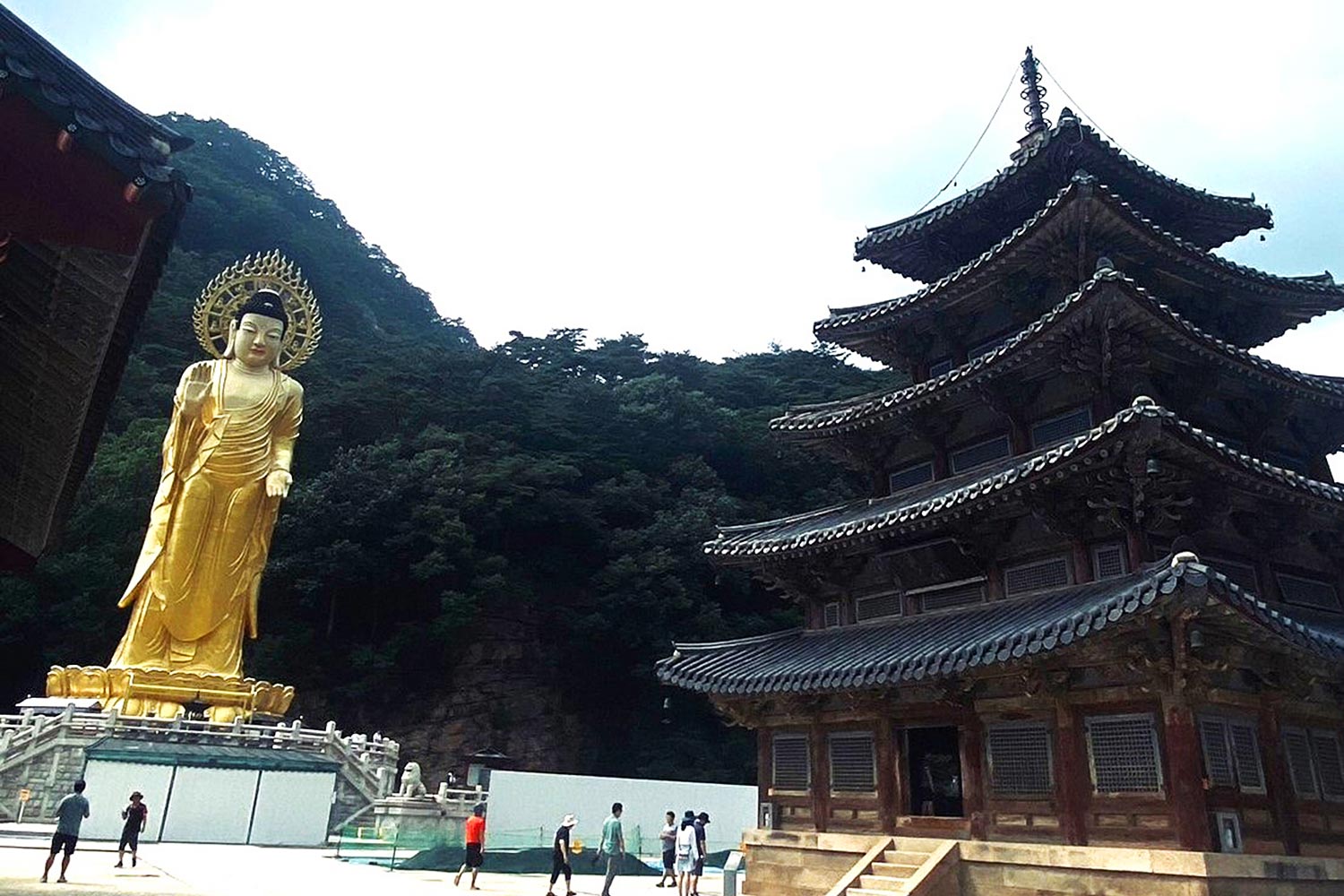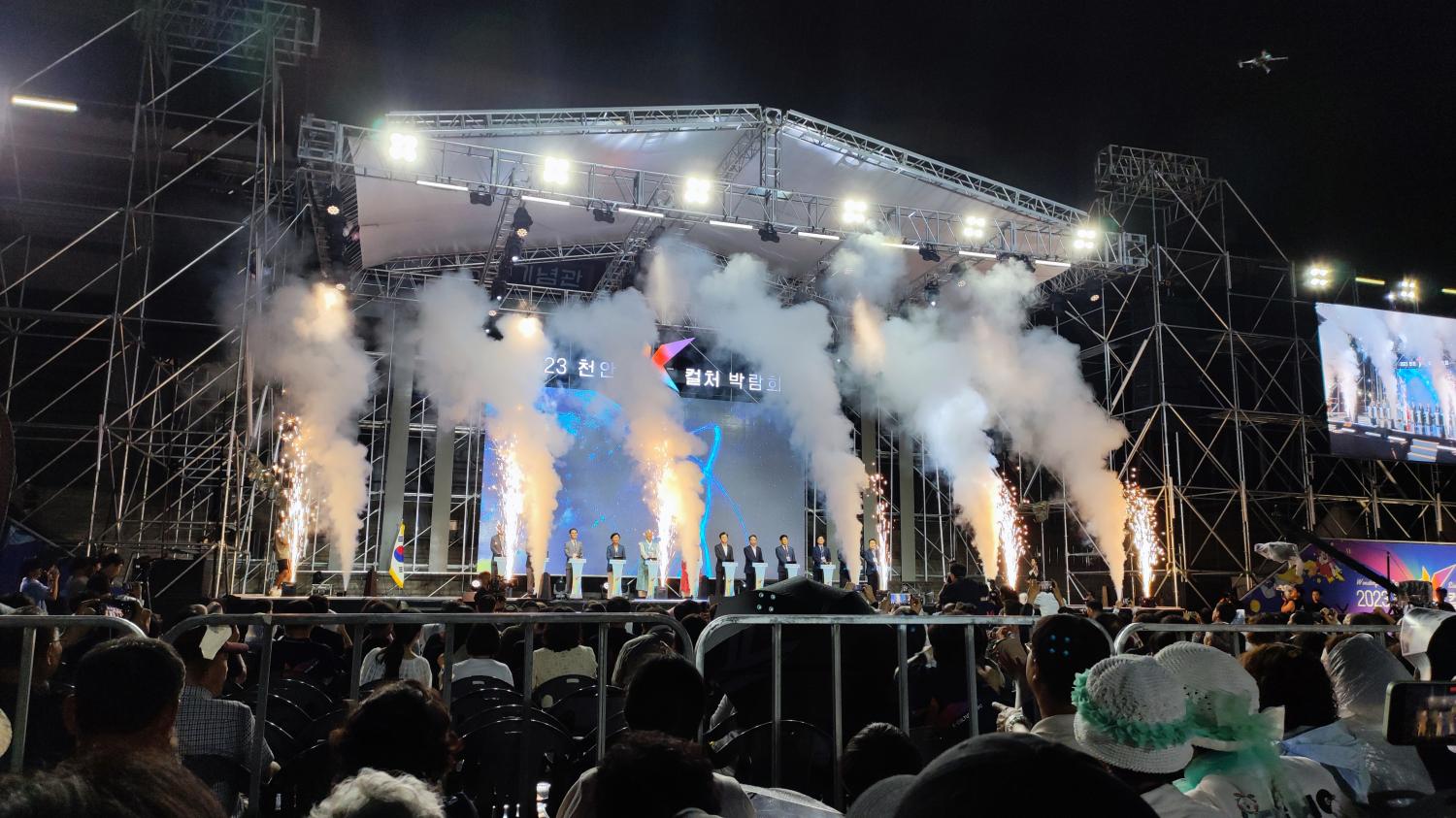
South Korea has introduced new destinations to attract more Thai tourists as part of bilateral cooperation to spur tourism in both countries.
This year marks the 65th anniversary since Thai-Korean diplomatic relations were established on Oct 1, 1958. The countries have close economic, social and cultural ties through the soft power of their tourism, food and entertainment industries.
Before the onset of Covid-19 in 2019, around 570,000 Thai tourists headed to South Korea each year. After the easing of Covid-19 restrictions, South Korea expressed its readiness to welcome international tourists under its new "Travel to Korea Begins Again" campaign.
The top five international arrivals to Korea are from the United States, China, Japan, Taiwan and Southeast Asia, with Thailand being the largest tourist market from this region.
Meanwhile, the number of South Korean tourists visiting Thailand during the first seven months of this year was 982,328, the fourth-largest market after Malaysia (2.5 million), China (2.02 million) and India (997,000).
Promoting second-tier cities
Besides popular destinations such as Seoul in the North and Busan in the South, South Korea also wants to promote Chungcheongnamdo (South Chungcheong province) and Chungcheongbukdo (North Chungcheong province) in the central region.
Chungcheong Region and the Korea Thailand Communication Centre (KTCC) recently hosted a familiarisation trip for the Thai Travel Agents Association (TTAA) and media outlets to visit highlights of cultural and historical sites and modern attractions in Daejeon, Sejong, Chungbuk and Chungnam cities.

The opening ceremony of the 2023 Cheonan K-Culture Expo held from Aug 11-15 at the Independence Hall of Korea was hosted by Cheonan City.

Koreans join a long queue to buy bread from Sungsimdang at Daejeon Station, the most famous bakery in Daejeon, South Korea.
Kim Jung-soo, manager of Cheongju International Airport, told the Bangkok Post that since T'way Air, a low-cost airline, launched daily direct flights from Cheongju International Airport in Cheongju City, the capital of Chungcheongbukdo, on April 27 to Don Mueang International Airport, about 150-200 Korean tourists now visit Thailand daily.
With the low-cost airline link, he hopes more tourists from Thailand, especially group tours and those looking at medical or wellness tourism, will visit Chungcheong, he said.
"Cheongju International Airport is in the centre of the country, so it has the advantage of< being geographically excellent. International arrivals at Cheongju International Airport are increasing steadily because it is also easy to travel from the Chungcheong area to Seoul," he said.
History, culture come alive
Pattama Raksakiat, general manager of KTCC, said one of the highlights of Chungcheong is the Cheongnamdae Presidential Villa.
The villa was built in 1983 by then-president Chun Doo-hwan, who attended the completion ceremony of Daecheong Dam in 1980 and was captivated by the scenery around Daecheongho Lake. It inspired him to have the villa built in the central region.

Located on the foot of Deoksungsan Mountain, Sudeoksa Temple is one of the oldest temples in Korea. It was also one of the very few temples which were not destroyed during the Japanese invasions of Korea in the 16th century.
Cheongnamdae Villa covers an area of 1,825,000m² and features a main building, golf range, heliport, and fishing area. It has welcomed six presidents over the past 20 years. The residency was opened to the public in 2003. Today the villa is a popular tourist site, receiving more than 13 million visitors in 2022. Tourists will experience not only the presidential facilities but also nature walking trails and an observatory.
Beopjusa Temple on Songnisan Mountain in Chungcheongbukdo is one of Korea's oldest and greatest Buddhist temples. Its history dates back around 1,500 years.
However, many of the original buildings were destroyed during a war in the 16th century and were rebuilt in 1624. The temple is well-known for its cultural heritage, including the 33-metre-tall gilded bronze Buddha statue, a five-storey wooden pagoda, and Daeungbojeon, one of three major Buddhist halls in Korea. The temple is also a Unesco World Heritage Site.
Ms Pattama said the temple area is beautiful during autumn (October and November) when the leaves of trees change colour to orange and yellow.
Another site is Sudeoka Temple, which is located at the foot of Deoksungsan Mountain in Chungcheongnamdo. The temple also has a long history and is believed to have been built in the 6th century. The temple is also home to Daeungjeon Hall, which is widely praised for its architectural beauty.
Modernised cities
Visitors to Chungcheong should also visit the world's largest rooftop garden at the Government Complex Sejong, said Ms Pattama, adding that its total length is about 3.6km or about 11 soccer fields.
It features 187 different plant species and has a total of more than a million plants, including herbs, fruit trees, berries and vine tunnels. It is also a good viewpoint to look at Sejong Lake Park.

Built in 1983, Cheongnamdae Presidential Villa was once a private villa used by presidents of Korea. It was open for public visits in 2003. The site was also selected by the Korea Tourism Organisation as one of the 100 Must-Visit Spots in Korea.
She said Daejeon is a popular place for shopping. The city is the fifth-largest metropolis in Korea and is known as a city of science and education.
It is home to the Expo Science Park, hot springs and Uineungjeongi Cultural Street. It is also known as a cutting-edge medical tourism city, which can be reached in only 50 minutes from Seoul by high-speed train.
"For those who've already visited Seoul and Busan, Korea also has other amazing places for them to discover, especially various cities in the central region," she said.
'Phi noi' still a concern
Wachira Wichaiwatana, vice president of TTAA, said Korea has become a popular destination among Thais since the Covid-19 pandemic.
In the first four months of this year, more than 500,000 Thais flew to Korea compared to before the pandemic, when about 570,000 Thais visited Korea each year.

The Presidential Archives of Sejong is the first Presidential Archives of Korea. It collects the archives of past heads of state and also has an exhibition hall that showcases Korean history.

Mr Kim Jung-soo, the manager of Cheongju International Airport, fifth from left, and his team welcome representatives of the Thai Travel Agents Association (TTAA) for a facilitation tour in Chungcheong region.
"With South Korea wanting to promote second-tier cities, it will fit well with those who are not first-time visitors. We also see an opportunity to bring in tour groups from state agencies who may want to visit the Government Complex Sejong, as well as individual visitors looking for something new," she said.
She said one of her concerns is the phi noi or "little ghosts", referring to Thai job-seekers who exploit the opportunity to enter South Korea as tourists before slipping away from their group tours to take jobs in the grey economy.
She said the phi noi issue has affected some Thai visitors who may be denied entry to the country. Thai people can travel to Korea without applying for a visa, but they must register and receive Korea Electronic Travel Authorisation before arriving in South Korea.
"Some immigration officials may see Thais who live upcountry as potential illegal workers and deny them entry. We try to solve the issue and also work with the Korea Tourism Organisation [KTO] to fix the problem," she said.
Surachart Boonviriyalai, managing director of Oscar Holiday Tour & Exhibition Ltd, said the Cheongnamdae Presidential Villa is attractive and will be a popular destination among Thais, while Daejeon City looks modern like Seoul. He believes the second-tier cities will appeal to Thai visitors.
K-culture a highlight
Young-Sook Yoon, Convergence Team director of the Daejeon Tourism Organisation, said Daejeon would like to welcome individuals and business travellers to its cities with activities and attractions.
"We [Daejeon City] are trying to attract more visitors from Asia, such as Thailand, Indonesia and Vietnam. Thailand is the number one tourist market in Korea, and we'd like to revitalise the Thai market, especially now we have daily direct flights from Bangkok to Cheongju," she said.

Locals and tourists watch a dancing performance at the Daejon Zero O'Clock Festival held from Aug 11-17 at Daejeon City. The city closes the 1km road from Daejeon train station to the former South Chungcheong Provincial Office for the event, which comprises three sections representing the past, present and future of the city.
She said the KTO plans to host a K-Culture festival and hold B2B meetings in Bangkok this month to promote tourism attractions and activities in second-tier cities.
She recommends a visit to Daecheongho Lake, a man-made reservoir covering an area of 72.8 km². It has scenic views and is a place to observe resident and migratory birds.
Another site is the Yetteo Folk Museum, where visitors can learn about traditional culture and arts in Daejeon.
"We would love to invite Thai tourists to visit us. You will experience another side of K-culture. We also have fun activities and festivals all year round."


